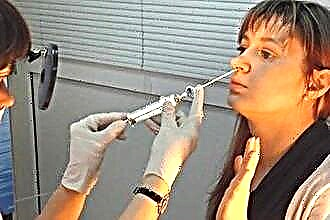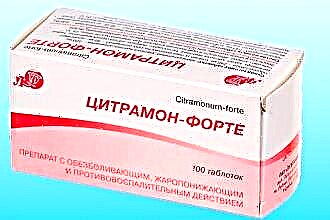Dysmetabolic cardiomyopathy (CMP) belongs to the class of dilated CMP. This is myocardial damage associated with prolonged exposure to alcohol, drugs, toxins on the body, as well as diabetes and thyroid pathology. A separate group is genetic mutations that lead to the accumulation of certain substances and disruption of tissues, including the myocardium. Treatment of a patient with a diagnosis of dysmetabolic cardiomyopathy requires careful selection of drugs, as well as strict implementation of all the prescriptions of the attending physician.
Reasons for development
Causes of dysmetabolic CMP include:
Alcohol abuse, especially if it lasts a long time and is accompanied by insufficient unbalanced diet;
- Poisoning with certain toxins and heavy metals, which is possible at work;
- Use of drugs such as cocaine and amphetamine;
- Certain anticancer drugs used to treat cancer;
- Infectious diseases affecting the myocardium;
- Accumulation diseases - metabolic disorders due to excess tissue production of various compounds (amyloidosis, hemochromatosis, sarcoidosis);
- Diabetes;
- Diseases of the thyroid gland;
Risk factors, the presence of which aggravates the course or provokes the development of cardiomyopathy:
- Complicated family history (presence of cardiac diseases among close relatives);
- Ischemic heart disease, myocardial infarction;
- Obesity, metabolic syndrome;
- Arterial hypertension;
- Toxic goiter;
Main complaints and symptoms
Some patients have never noticed symptoms or any unusual phenomena in their health. This is the case with diabetes mellitus that is poorly controlled or does not respond to treatment. An excess amount of glucose in the blood not only destroys the capillaries, but also negatively affects the nerve endings, as a result of which there is a loss of sensitivity.
Over time, cardiomyopathy weakens the heart, causing myocardial dystrophy, leading to chronic heart failure, symptoms of which include:
Shortness of breath, depending on the stage, during exertion and at rest;
- Fatigue, lethargy, intolerance to the usual loads, fatigue;
- Cough due to accumulation of fluid in the pleural space;
- Weight gain due to fluid retention;
- Swelling of the ankles, steppes, legs, thighs, up to the whole body;
- Swelling of the neck veins;
- Accumulation of fluid in the abdominal cavity, an increase in the abdomen, the appearance of an umbilical hernia;
- Interruptions in the work of the heart, tangible and bringing psychological discomfort;
- Angina pectoris.
Diagnostics and treatment
The symptomatology of dysmetabolic cardiomyopathy is not specific, that is, it is characteristic of other pathologies as well, which means that a thorough laboratory and instrumental examination is necessary.
Since metabolic diseases are associated with a violation in the structure of genes, they manifest themselves in childhood, and they are dealt with by a pediatrician, pediatric geneticist and cardiologist.
Dismetabolic CMP for adults is managed by general practitioners, family doctors and cardiologists. Below we will talk about the diagnostic principles of detection in adult patients:
Analysis of patient complaints;
- Family history collection;
- Physical examination;
- Laboratory tests;
- Chest x-ray;
- ECG;
- Holter monitoring;
- Echocardiography;
- Stress test;
- Coronary angiography;
- Myocardial biopsy;
- Genotyping.
The latter two studies are especially important in metabolic cardiomyopathy. Analysis of a piece of muscle tissue allows you to understand the cause of the development of the disease, as well as its degree of progression. This procedure is painless and does not require anesthesia; it is performed with catheterization of the heart chambers with a special probe, which is inserted into the patient's vascular bed through the femoral artery.
Genotyping allows you to determine the likelihood of transmission of the disease to offspring, as well as identify abnormalities that led to the underlying metabolic disease.
Recent clinical protocols indicate that symptomatic CMP does not require treatment.
Therapy depends on the severity of the manifestations of the disease, as well as on the presence of background and concomitant diseases, complications and age.
The goals of drug treatment
Therapy of the underlying disease;
- Normalization of blood electrolyte levels. Trace elements maintain the acid-base balance in the body, as well as control the exchange and excretion of fluid, and ensure the functioning of the nervous and muscle tissue. Disturbed levels of sodium, potassium, chlorine indicate dehydration, heart failure, arterial hypertension and other disorders of the body.
To correct the microelement composition of the blood, aldosterone receptor blockers are used.
- Maintaining the sinus rhythm of the heart with antiarrhythmic drugs;
- Lowering blood pressure to safe levels with a combination of medications - beta-blockers, ACE inhibitors, calcium channel antagonists;
- Prevention of the formation of blood clots with the help of two medicines - anticoagulants, which affect the system of plasma protein compounds, which trigger thrombus formation, and antiplatelet agents, which prevent platelets from sticking together;
- Excretion of excess sodium with diuretic drugs, which, thus, lower blood pressure and remove edema;
- Reducing heart rate and increasing the efficiency of cardiac output by glycosides such as digoxin. It is a herbal extract that can be toxic if used improperly;
It is necessary to start positive changes in your life in order to create a favorable background for drug and surgical treatment:
- Symptom control. It is very useful and convenient for both the patient and the doctor to keep a diary, in which information will be entered daily on complaints, pressure, pulse, the amount of fluid drunk and withdrawn, and the drugs taken.
- Regular check-ups;
- Physical activity, in proportion to the functional capabilities of the body. Even a simple walk with the dog or skipping a couple of transport stops to get home on foot will be helpful;
- Smoking cessation. The use of nicotine patches, gum, and consultation with a psychologist can make the withdrawal period easier;
- Avoiding alcohol;
- Refusal to use drugs. This will be helped by rehabilitation centers that provide consultations with a narcologist, psychotherapist, and also provide substitution therapy;
- Correction of dietary habits with a reduction to a minimum of salt and animal fats in the diet;
Surgical treatments
Resynchronization therapy - a special implant similar to a pacemaker coordinates the contractions of the heart chambers in arrhythmias, which often occur with CMP.
- Installing a cardioverter-defibrillator - a device smaller than a matchbox in size, which controls the heart rate and, if necessary, generates an impulse that restores it.
- Heart transplant is the last chance for patients with cardiomyopathy and end-stage heart failure. This means that the ongoing conservative treatment no longer predicts effectiveness. A technically complex operation requiring lifelong maintenance with drugs that suppress the immune response to foreign tissues.
Conclusions
The prognosis for health and work capacity with dysmetabolic cardiomyopathy in the early stages is favorable, but it is in an unstable balance, which means that it requires efforts to maintain it. Regular medical monitoring, fulfillment of prescriptions and maintaining a healthy lifestyle will allow the patient to live for many years without aggravating the condition.



